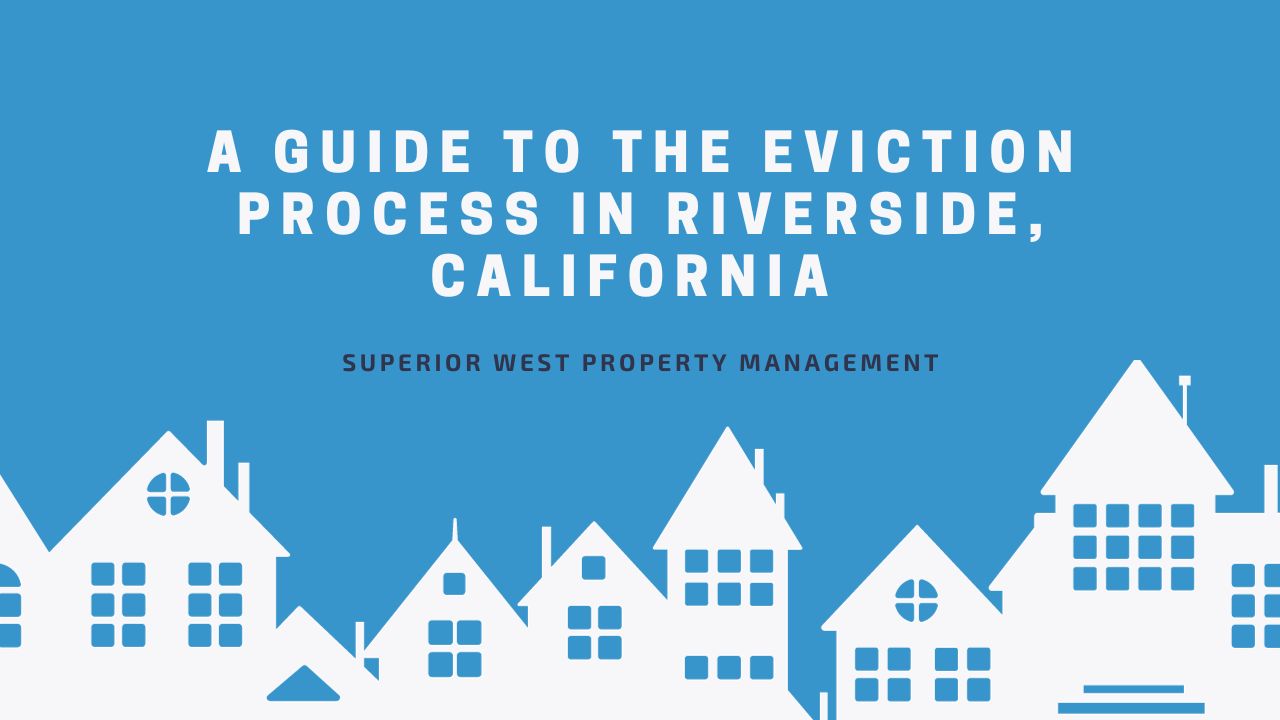A Guide to the Eviction Process in Riverside, California
According to the state’s landlord-tenant laws, landlords in California must follow certain rules when evicting tenants from their property. You must have “just cause”, serve the appropriate eviction notice, and obtain a court order, among other things.
Engaging in other eviction tactics is bound to fail, and may even land you in legal trouble should the tenant choose to sue you. In today’s post, we’ll walk you through all the steps you need to know to legally evict a tenant in California.
What’s the Eviction Process in California?
To begin the eviction process against a tenant in California, you must first have a legitimate reason. Such reasons include failing to pay rent, violating a lease term, engaging in criminal activity, and failing to move after the lease agreement is up.
Once you have any of those reasons, you can then serve the tenant with an eviction notice. An eviction notice is a special legal document that landlords need to serve tenants to terminate the lease. In the notice, you must state the reason for the lease termination as well as the action(s) the tenant must take within a certain period.
The next step to take will depend on what action the tenant has taken. If the tenant cures the violation, such as paying the rent due within the notice period, then you must stop the eviction action against them. Otherwise, you can continue with the eviction process by filing a lawsuit in court.

Notice for Lease Termination with Legal Cause
To terminate the lease, you must serve the tenant with an eviction notice. The type of notice must coincide with the violation the tenant has committed. If the tenant chooses to ignore the notice, you can go to court and file a Complaint and Summon.
The following are examples of tenant eviction notices a landlord must use in California:
- 3-Day Notice to Quit – You must serve this notice to a tenant you’re trying to evict for failing to pay rent on time. It gives tenants 3 days to pay the due rent or vacate their premises.
- 30/60-Day Notice to Vacate – These types of notices are for tenants who have no lease or rent on a month-to-month basis. For tenants who have occupied their rental premises for less than a year, you must serve them a 30 days advance notice. For those who have occupied the property for a year or more, you must serve them a 60 day advance notice.
- 3-Day Notice to Vacate – This type of notice applies to tenants who have engaged in criminal activity while at the property. It gives a tenant 3 judicial days to leave, with no option to cure the violation.

Serving a Tenant with an Eviction Notice in California
In California, landlords have several options when it comes to serving tenants with eviction notices. The first option is to hand it in person.
You can also leave a copy with a person of a “suitable” age if you’re not able to get hold of the tenant. You must then mail a copy to the tenant via either registered or certified mail. Finally, you can choose to post the notice on the entry door. You must also make sure to mail another copy to the tenant by mail. When serving an eviction notice to a tenant:
- Serve the notice on a weekday during normal business hours
- Don’t leave the eviction notice with a minor
- Serve the notice peacefully and lawfully
Tenant Eviction Defenses in California
Tenants facing eviction in the state of California have a right under state law to put up a legal fight. The following are ways in which tenants can do that:
- If the landlord fails to comply with the eviction notice requirements. For instance, not using the right notice.
- If a landlord fails to maintain the unit to the expected habitability standards. As a landlord, you must abide by the state’s safety, health, and building codes.
- If the eviction was based on discriminatory reasons prohibited under the Fair Housing Act.
- If the eviction is retaliatory. Retaliatory evictions are vengeful actions against a tenant for exercising a legal right.

Attending Court Hearing
After successfully filing a Summons and Complaint in court, you should expect the hearing no more than 20 days later. If the court makes a favorable judgment, you will need to request a Writ of Execution. The writ is a court order that will grant you back possession of your rental property.
In California, a Writ of Execution gives a tenant only 5 days to remove their belongings from the unit. Note that the tenant may be able to file an appeal after an unsuccessful ruling. However, this will not stop their eviction from the property.
In California, the only way a tenant can stop an eviction is by requesting a Stay of Execution. And even if granted, it would only delay the eviction by an extra 40 days. At the end of the 40 days, the tenant would have no other option but to leave.
Bottom Line
The eviction process in California is pretty straightforward. You just have to make sure that you follow all the steps for it to be successful and legally compliant. But should you need expert help, don’t hesitate to contact Superior West Property Management. We’re dedicated to providing high-quality property management services to rental property owners in and around Riverside County, CA. Get in touch today to learn more!
Disclaimer: Please note that the information provided in this blog is intended for general guidance and should not be considered as a replacement for professional legal advice. It is important to be aware that laws pertaining to property management may change, rendering this information outdated by the time you read it.













California Landlord Tenant Law (Ultimate Landlord Guide)
November 9, 2023[…] Evict the tenant from the property for violating a term of the lease agreement. […]
California Security Deposit Law (Ultimate Landlord Guide)
November 9, 2023[…] Luckily, you can deduct from their deposit to cover the cost of fixing this damage. You can also file for an eviction if the damage constitutes a lease […]
Breaking a Lease in California - Know Your Rights
December 6, 2023[…] Sending the subletting request via certified mail with the return receipt requested is a best practice that adds a layer of formality and documentation to the process. As a landlord, you reserve the right to approve or reject the subletting request. If tenants don’t adhere to the lease policies, you may have grounds to begin the legal eviction process. […]